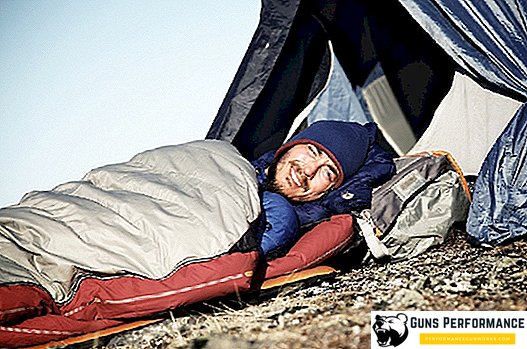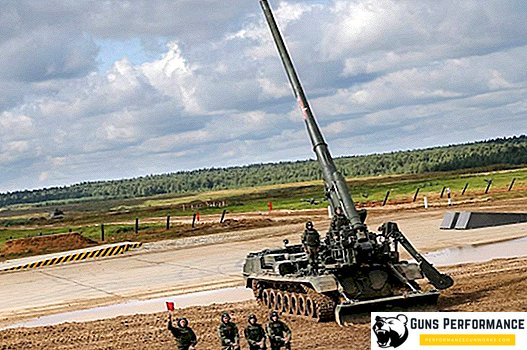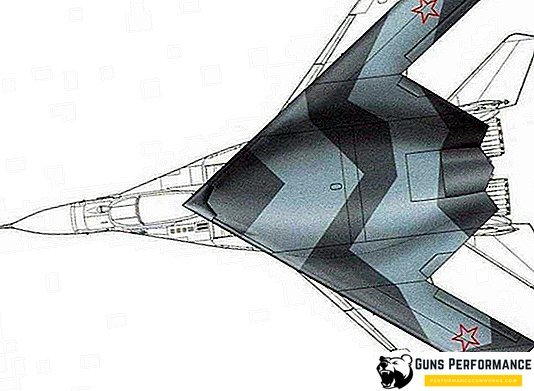Choosing a sleeping bag, a stalker should be aware of the three varieties of this tourist equipment. Sleeping bags are for:
- Hikes;
- Camping;
- Extreme overnight stay.
After determining the destination, it is advisable not to make a mistake in choosing a sleeping bag.

Types of sleeping bags for designs
In total there are several basic sleeping bag designs, and this is:
- Sleeping-blanket. In appearance it resembles an ordinary blanket, but with a long detachable zipper, with which you can combine several sleeping bags into one more capacious design;
- Sleeping bags - this classic design differs from the previous version in the presence of a special hood, which provides a more comfortable rest;
- Sleeping bag-cocoon is made in the form of a trapezoid, which expands closer to the headboard. Like a sleeping-blanket for spending the night in nature, it has a hood and a long longitudinal zipper. Sleeping cocoon bags take up less space in backpacks and they are more comfortable for individual overnight stays.
Quality sleeping bags
To date, the requirements for comfort, resistance to deformation and wear of sleeping bags, are quite high. Full compliance with these characteristics can only be provided by tourist equipment from famous manufacturers. The guarantee of high quality products from reputable manufacturers is the availability of technical warranty cards and passports.

These documents clearly spell out everything related to external and internal tissues, and also indicate temperature limits that are convenient for using tourist equipment. The information about the temperature mode of a sleeping bag may differ for men's and women's products.
Temperature performance of sleeping bags
Most of the temperature ratings do not give a complete understanding of whether a particular person will be comfortable in a particular sleeping bag. Since the perception threshold of cold is different for different people, and prepared tourists, for example, tolerate low temperatures more easily, there was a problem with determining comfortable temperature conditions. As a consequence, it was decided to create a single EN 13537 test, which allows ranking different sleeping bags, large and small, according to the climatic conditions in which they may be used.

What is a temperature scale?
The temperature scale includes the following indicators:
- T-comfort - the lower limit of comfort for average women;
- T-limit of comfort - the lower limit of comfort for average men;
- T-extreme - a zone of potential hypothermia.
This scale was calculated for people aged 18-40 years who are physically fit, eat well and have no signs of hypothermia.
Comfort temperature is the range of temperatures at which people can stay in a sleeping bag without feeling cold all night. Extreme temperature is the lowest rate at which it is possible to use one or another tourist equipment for sleeping.
Signs of quality sleeping bags

In good sleeping bags there are no quilted, so-called "cold" seams. In addition, a quality sleeping bag can be distinguished by the following features:
- The presence of enhanced lightning, protected from accidental seizure of tissue;
- Cords, fixing hood sleeping bags;
- Perfectly smooth seams;
- There are loops for drying;
- High-quality fittings;
- The sleeping bag is made of high-tech fabrics (polyester, cotton, flannel).
The materials of sleeping bags should breathe, be pleasant to the touch, not absorb moisture and odors. Only in such sleeping bags, outdoor recreation can be called comfortable.
Sleeping bags Alexika: key features
One of the most popular manufacturers of sleeping tourist inventory today is Alexika. Their sleeping bags are of high quality, long service life and are in great demand among experienced tourists. The main characteristics also include the following:
- The kit of the presented inventory includes sleeping bags themselves, compression bags-covers, and product passports;
- Sleeping bags can be equipped with compression bags-covers, which will significantly (by 30-40%) reduce the volume of sleeping bags assembled. Covers have convenient access inside, which allows you to conveniently place light sleeping bags in them, and then also easily tightened with the help of compression straps attached outside. The dimensions of sleeping bags in the covers are indicated as follows: 39 / 29x27 cm. 39 cm is the length of the covers in unstressed states, 29 cm in length, 27 cm is the diameter;
- In sleeping bags, blankets indicate the length and width, for cocoon bags - the width at the shoulders, the length and width at the legs. In order to choose a sleeping bag in which it will be comfortable, it is necessary to add another 30 cm to your height;
- Seasonality of the inventory is characterized by the presence of summer and winter options;
- In the Alexika sleeping bags, the comfort temperature is indicated based on the European standard EN 13537. This means that sleeping bags are used by people of about 25 years old, of medium height and weight, who sleep in a tent, lying on a thermal insulating mat, eat well and do not have signs of hypothermia ;
- The temperature of the extreme sleeping bags "Alexika" allows you to "sit out" the bad weather. For example, winter sleeping bags can provide protection against frostbite to approximately 6 hours. However, the experts of the company "Alexika" with all the official do not recommend focusing on such temperatures and pay more attention to sleeping bags for extreme tourism, and also take into account their physical potential and weather in travel areas;
- For the outer top cover of a sleeping bag, modern, breathable synthetics are usually used, providing ventilation and comfort;
- Synthetics, which has high wear resistance and water resistance, is usually used for the bottom coating;
- Inside, the sleeping bag is trimmed with breathing synthetic counterparts and natural materials, which have a comfortable and pleasant to the touch surface;
- All offered products are made using synthetic insulation. They are almost not inferior to natural fluff, for example, in down sleeping bags. However, unlike fluff, they do not lose their insulating properties when wet, for example, when they need to be washed, they dry out quickly, are very durable.


Down is usually used in sleeping bags as a filler with the expectation of a low (below -25 C) average daily temperature, to provide protection from the cold.












